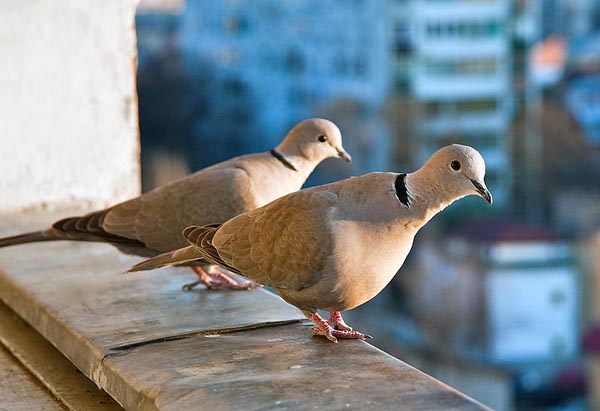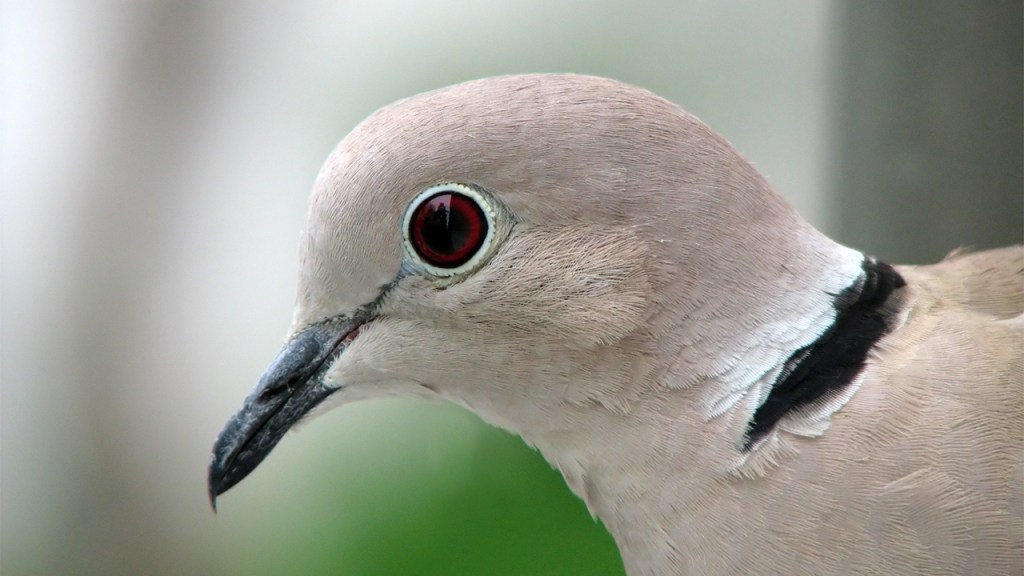The Great Backyard Bird Count (GBBC) — one of the largest citizen science initiatives in the world – annually documents a wide variety of bird population trends.
To my mind, one of the most interesting has been the dramatic spread of the non-native Eurasian collared dove across North America.
The GBBC asks citizen birders to watch an area for at least twenty minutes sometime during a four-day period in mid-February (this year’s count concluded yesterday), and record the birds they see.
Just ten years ago, seeing a Eurasian collared dove would have been a novelty. No more: the doves are now commonly reported by birders in most of the United States.
GBBC data tell the story of this rapid spread.
In the 1970s, the Eurasian collared dove was introduced to the Bahamas. By the early 1980s, the non-native birds made their way to South Florida, where they established populations. Then they began spreading north and west.
Their range appears to have expanded slowly at first. A look at GBBC reports from 1998 show a lot of sightings in Florida, with some birds reported in Texas, Alabama and Arkansas.
By 2001, the doves reached California.
Last year’s bird count results showed the Eurasian collared dove had colonized much of the country. It has not (yet) been reported in New England, but it has reached as far north as Alaska.
The GBBC’s video map dramatically illustrates this expansion.
In my state of Idaho, the doves were first recorded in 2005 by two backyard birders. In subsequent years, the bird was commonly reported in Idaho’s eastern corners. Last year, 132 GBBC participants reported 719 doves throughout the state.
I saw my first Eurasian collared dove in our backyard in 2008 – a banded bird that may have been an escaped pet. Last year, I began seeing the doves hanging around our neighborhood. This year was the first that I noted the species during my own participation in the Great Backyard Bird Count.
What’s going on here? Should conservationists be concerned about this spread?
Unlike some dove species, Eurasian collared doves aren’t migratory. However, they do readily expand into new suitable habitat. In fact, in their native Asia, Eurasian collared doves have been rapidly expanding their range as well – colonizing new countries every year.
The dove is one of those species that adapts well to humanity. The trees, power lines and bird feeders of suburbia provide perfect habitat. The Eurasian collared dove is almost always seen near homes and farms, not unbroken forest or prairie.
Research indicates it is not adversely affecting native mourning doves or other birds. It may simply be filling a new habitat niche created by suburban habitat. But it is still early in the spread.
Could Eurasian collared doves become an invasive threat? That remains to be seen.
Citizen science projects like the GBBC and another citizen initiative, Project FeederWatch, will help scientists continue to track the spread and impacts of the species. It will be interesting to learn what this year’s count found about Eurasian collared doves. If past years are any indication, their populations will likely have grown and spread into new areas of the country.
Have you seen Eurasian collared doves in your area? Have you noted other trends during your backyard bird counts? Let us know what you’re seeing!





I have seen this bird. This morning, an adult pair fed in my back yard. I enjoy watching them. They are so elegant.
There is a pair of eurasian collard doves that feed on seeds in my driveway most mornings. I live in Northern California near the Oregon border.
seen them I have over 30 who live here in my yard eat me out of house and home for the last year and they are huge one warbles the rest are hens I believe every day at 2091 daly dr Coeur d alene idaho
A pair arrived in our neighbourhood in North Nanaimo, (Vancouver Island) B.C. a few years ago and return every spring.
A couple showed up at the feeder a couple weeks ago. 7 were spotted out there today. SE King County, WA
Lately I’ve noticed at least one solitary collared-dove that is a common visitor to my bird feeder in Central Texas – Llano County to be more specific. I’ve counted as many a 30 white-wing doves and a few of the other native dove species – but this Eurasion collared-dove is the one that stands out.
We’ve had the bird feeder set up for the past 5 years. This new dove has been a visitor for the past several months.
I have two that visit my bird feed area every morning.
I saw a pair of these Eurasian Collared Doves at my bird feeder today. They flew in with two pairs of Mourning doves. I live in Adamsville, Tn., in west Tn.
Just saw a Eurasian dove at my backyard feeder. I IV heard we r have a pair that frequent our back yard this year. We always have flocks of Murning Doves. I also see Oregon Juncos, House Finches, sparrows, and the occasional chickadee abd gold finch. This s is in West Boise .
I saw a Eurasian Collared Dove in my backyard this morning. It seems to be hanging around with the other doves. It’s a very pretty bird. So far, just one. I didn’t know they were being counted until just now.
Thanks for the interesting article!
Susan Barkley
Richland Chambers Reservoir, Texas
(1.5 hours south of Dallas)
We just spotted a pair of Eurasian Collared doves in our backyard. We have feeders, both on a post & on the ground for over 5 years but this is the first time for this dove species. Mourning doves have been the only dove species prior to today, which Feb 7th & we live in the northwest corner of Turlock CA not far from orchards, open fields & field crops.
01/26/2016
There was one in my yard. I had not ever seen one in the area before.
They are in my pine trees in Elk, Washington…99009
Sorry, I live in central Alberta Canada
I have seen this bird for the past two weeks feeding under backyard feeder and finally know what it is. I try to take a picture but each time I frighten it away. Now at least I know what it is.